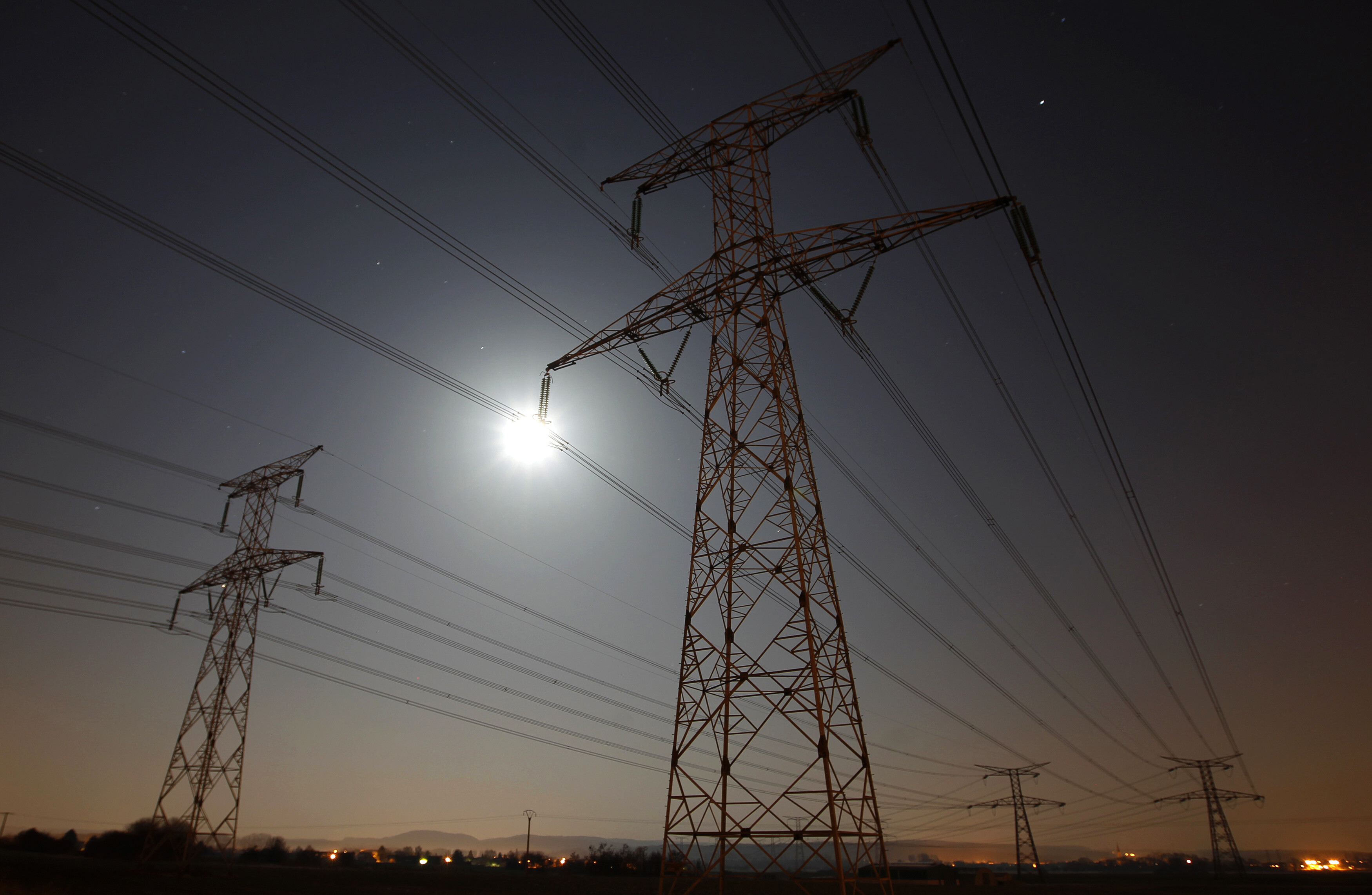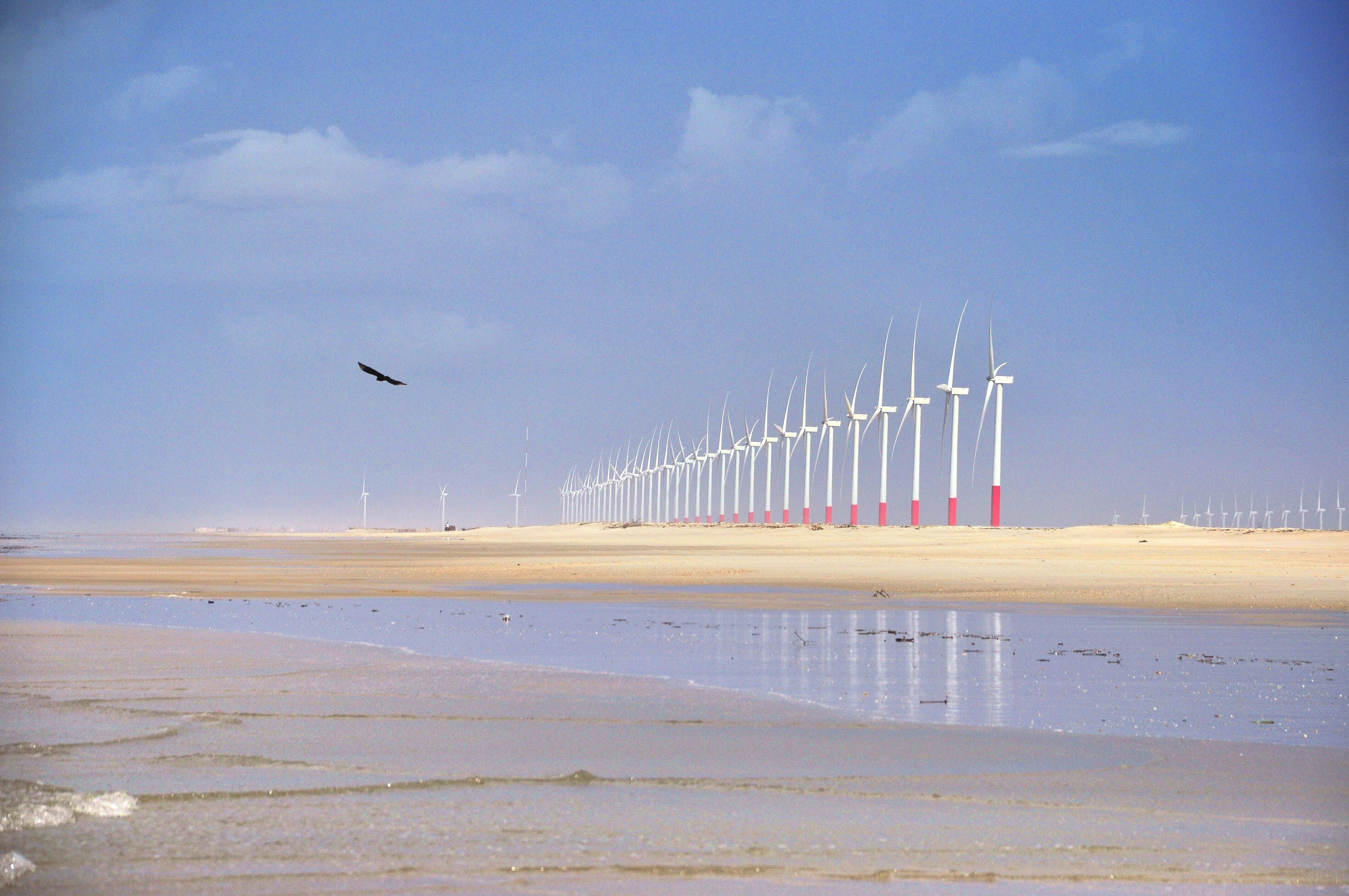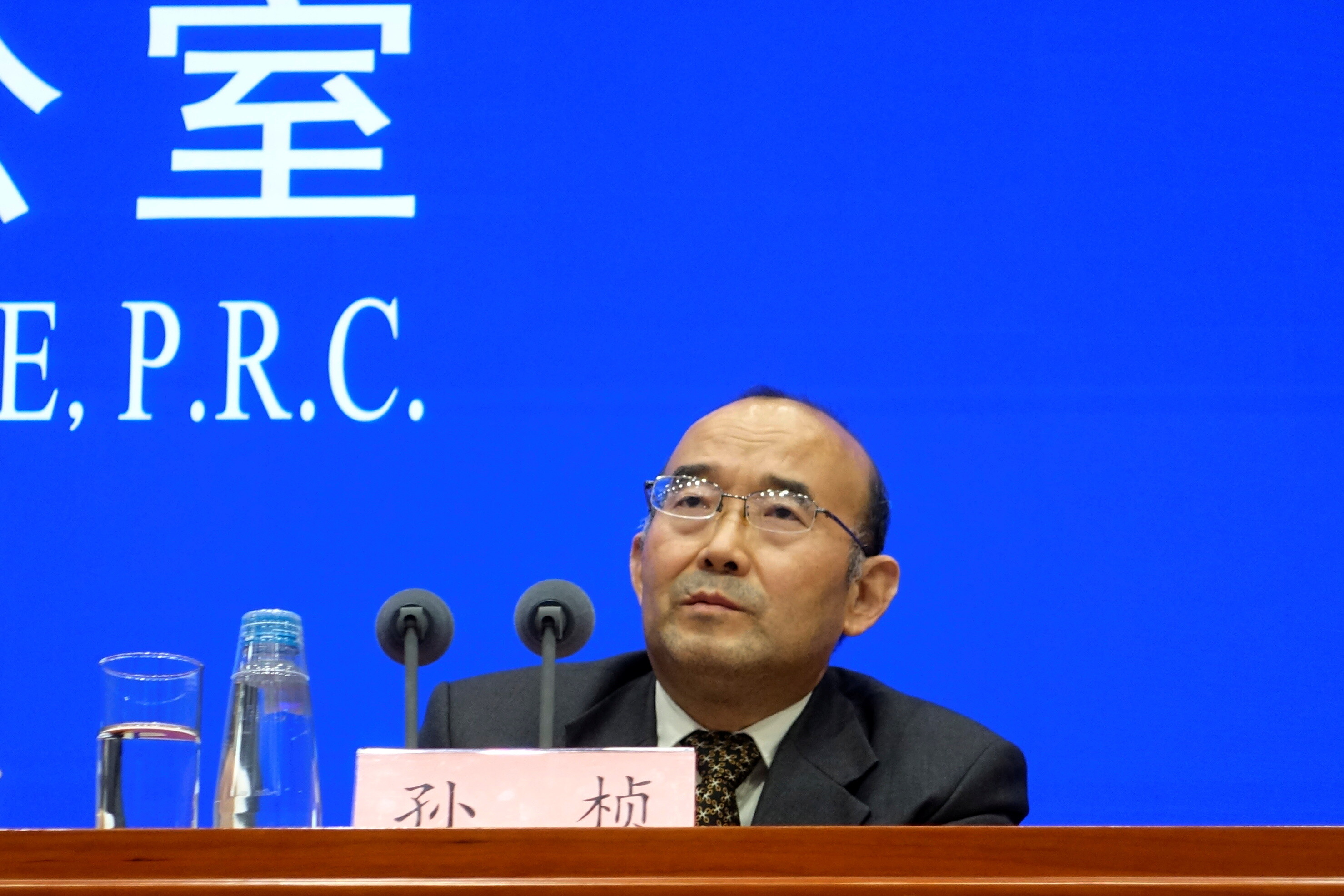Here's how China can achieve economic growth without increasing carbon emissions

China is a world leader in renewables but also ranks high for carbon emissions
Image: REUTERS/Reinhard Krause
Nicholas Wagner
Manager, Energy and Industry Transition Intelligence – Energy and Materials, World Economic ForumStay up to date:
Decarbonizing Energy
- The IPCC states that the world needs to curb its carbon emissions by up to 58% in 2030 to not overshoot global temperature rise of 1.5C.
- China, USA, India, EU27 and the UK account for two thirds of emissions.
- China now emits around twice as much as the US, the next largest emitter, write three International Renewable Energy Agency experts.
- If China does not reduce carbon emissions before 2030, it will be very challenging for the world to stay within the 1.5C envelope.
- Decoupling GDP growth from emissions growth will be an important component of a decarbonisation strategy for China and the world.
Beijing suffered some of the worst sandstorms in a decade in March, caused by a combination of drought, low snow covers and high temperatures, another demonstration of the effects that climate change is already having and its potential to severely impact lives and livelihoods.
The IPCC states that the world will need to curb its carbon emissions by 41 to 58% in 2030, compared to 2010 levels, in order for limited or no overshoot of a 1.5C global temperature rise. In fact, emissions have increased by about 15% since 2010. Energy and process emissions reached a level of 37 Gt in 2019 and although they dipped in 2020 because of the Covid-19 crisis they were back to the previous year’s level in the last months of 2020, due in large part to the rebound in economic activity in China.
China, USA, India, EU27+UK: two-thirds of global carbon emissions
Addressing that challenge will require concerted action by all countries but the actions of few countries and regions are critical. China, USA, India and EU27+UK account for two thirds of global emissions. Together they will determine whether we get on a pathway consistent with 1.5C.
China: both Coal and Renewables are up
China now emits around twice as much as the next largest emitter (the US). And in 2020, China is estimated to have added over 38 GW of new coal fired capacity (a net addition of 30 GW accounting for retirements). In the rest of the world, coal capacity declined by around 17 GW in that year. In just one year, the growth in China was twice the decline seen in the rest of the world. On the flip side, China added 72 GW of new wind and 49 GW of solar – both 3-5 times higher than the next closest country.
In this context, what China does to tackle climate change matters massively. In particular, if China does not reduce carbon emissions before 2030, it will be very challenging for the world to stay within the 1.5C envelope. The climate summit organised by President Biden later this month and COP26 in November may provide clarity on where we are collectively heading. But as the direction of the energy transition is largely the same for 1.5C and 2C (only differentiated by the pace of emission reductions), all efforts in the coming years will contribute to limiting climate change in the long run.

Coal use accounts for three-fifths of China’s energy supply. By the end of 2020, China’s total installed power generation capacity reached 2,201 GW. Coal accounted for 1,080 GW installed capacity (49.1%). Non-fossil fuel accounted for 44.7%. China’s energy and process CO2 emissions reached 11.5 Gt CO2 in 2019. 7.7 Gt emissions were from coal use, 1.4 Gt from oil, 0.4 Gt from natural gas and 2 Gt from industrial process emissions. But around 14% of the carbon emissions in China are used to produce goods that are bought elsewhere.
Renewables leader
But China is also leading the world in renewables. Renewable energy accounted for 72.8% of newly installed capacity in China, and cumulative installed capacity reached 934 GW, an increase of 17.5% year-on-year. China added 138 GW renewables capacity in 2020, more than the rest of the world combined.

An accelerated global transition is needed
The International Renewable Energy Agency (IRENA) recently launched its World Energy Transitions Outlook (WETO). The report provides details on how to reduce global energy and CO2 emissions to zero between now and 2050 in line with limiting warming to 1.5C. The energy transition that is required is very profound:
- Annual energy intensity improvements must rise from 1.2% in recent years to around 3%. Renewable power, electrification and circular economy have a key role to play in reducing the energy intensity, on top of the conventional energy efficiency technologies;
- Annual renewable energy share growth in primary energy needs to accelerate 8-fold from recent years;
- Renewable power generation needs to grow from 2,500 to 27,500 GW by 2050, a growth of 800 GW per year, a 4-5 fold increase of the annual capacity additions from recent years;
- Electric vehicle sales need to grow from 4% to 100% of all vehicle sales and electric vehicle stock needs to grow from 7 million in 2020 to 1.8 billion in 2050;
- Hydrogen demand needs to grow from 120 Mt to 613 Mt in 2050, a fivefold increase. On average 160 GW electrolysers must be installed every year between now and 2050;The total primary supply of biomass will need to increase to just over 150 EJ, nearly a tripling of primary biomass use in 2018;
- In order to stay within the remaining carbon envelope for 1.5C, global emissions need to fall by more than 50% between now and 2030 to below 15 Gt. In such scenario there is no room left for emissions to grow or stabilise in China.
Challenges for China on its way to curbing carbon emissions
China’s scale along with a number of unique characteristics make its transition to net-zero emissions challenging:
- China aims to become a high-income country by the end of the 14th Five Year Plan in 2025, and to double the size of its economy and GDP per capita by 2035. Decoupling GDP growth from emissions growth will be an important component of a decarbonisation strategy for China.
- At present, China’s urbanisation level is about 60%, about 20% short of advanced economies.
- China’s geography is vast with significant differences between regions in terms of resources and demand. China’s solar and wind resources are in the North and the West and Hydro is concentrated in the South and Southwest, while demand is concentrated in the Centre and East.
- China capital stock is young. For example, industrial plants in the steel, chemicals and cement sectors are typically 5 to 15 years old. Operating the assets until the end of their life would imply emitting about 260 GtCO2.
- China is the world’s largest producer of a range of energy-intensive commodities including iron and steel, aluminium, cement, ammonia, methanol and plastics. The manufacturing industry accounts for 60% of gross final use. The industry is largely coal-based, and coal use has been growing in recent years.
China’s targets
In 2020 China announced that it will aim for carbon dioxide emissions to peak before 2030 and to achieve carbon neutrality before 2060 and that, as part of its Nationally Determined Contribution under the Paris Climate Change Agreement, it aims to lower its carbon dioxide emissions per unit of GDP by over 65% from 2005 levels, increase the share of non-fossil fuels in primary energy consumption to around 25%, and bring its total installed capacity of wind and solar power to over 1.2 Terawatts (TW).
In March 2021, China’s 14th 5-year plan for the economy and the long-range goals for 2035 were ratified, and included further details of China’s decarbonisation plans, including a target for 2025 to reduce carbon emissions per unit of GDP by 18% over 2020 levels, and energy consumption per unit of GDP by 13.5%.
Those announcements provide important signals on the pathway China wishes to follow. Later in 2021 the 14th five-year plan on energy will be published alongside, for first time, a dedicated five-year plan on addressing climate change. Individual provinces will also publish their plans. China will also during 2021 submit its revised NDC under the Paris Climate Change agreement. Taken together those energy and climate plans, province-level plans and the NDC statement are a critically important opportunity to set out the detailed steps needed to put China on the pathway to meet its 2060 goals.
The pathway for China
Whilst there is not yet an official pathway for China’s decarbonisation, a number of recent studies shed light on the proposed pathways. Tsinghua University developed a 1.5C scenario where energy emissions stabilise between 2020 and 2030 and total GHG emissions are reduced by 90% in 2050, compared to 2020 levels. In such a scenario the global emissions in 2030 are not in line with the 1.5C pathway without overshoot. Other recent studies, for example by the NDRC Energy Research Institute, show a pathway with carbon emissions reducing to around 7 Gt (-40%) by 2030 and net-zero emissions by 2050. China's Renewable Energy Outlook includes a well below 2C scenario. In all three studies, the energy mix changes profoundly towards renewables (Figure 3).

A common feature in all studies is the urgency for action in the 2020s. In particular, the actions taken in the next 5 years will be critical. Holding temperature rises to no more than 1.5C will require all major economies to go further and faster this decade than current pledges, China included.
For China, that means carbon emissions must peak sooner than 2030. That looks achievable, without significantly impacting economic growth, if the current deployment rate of renewable power is accelerated, coal use is deprioritised, and efficiency improvements are sustained. In that context, the announced growth plans for solar and wind of 700 GW added by 2030 do not look very ambitious. More can be done and if capacity additions continue at the 2020 level, more will be achieved.
IRENA’s WETO projects significant potential for offshore wind and rooftop PV in China. This will also ease the need for transmission lines. But key end-use sectors, notably in industry, also require attention. Due to cost reductions and technology improvements there are now viable renewables based solutions available, for example the use of green hydrogen.
A joint study by the State Grid Corporation China and IRENA concludes that electricity can rise to more than half of China’s final energy use by 2050. Strategies for the decarbonisation of energy intensive industries include exploring the targeted use of CCS particularly for cement kilns and considering outsourcing some of the energy intensive industry activities, for example import of hydrogen direct reduced iron, green ammonia or renewable methanol.
Beyond solar and wind, China has the potential to be a technology leader in other emerging technologies. For example, expenditure on RD&D has doubled since 2010. In addition to preparing for deeper carbon emission cuts post 2030, enabling conditions to need to be progressed this decade including enabling infrastructure. Building confidence in solutions for low-carbon industrial processes, in shipping and aviation and in CCS, will also path the way for rapid post 2030 deployment.
What's the World Economic Forum doing about the transition to clean energy?
Priority actions for China to minimize carbon emissions
China will have to build on its strengths and progress to date to develop its renewable energy resources to the maximum extent, including the direct use of electricity, but also the use of bio-fuels, and hydrogen and synthetic fuels. That focus on renewables will need to be accompanied by policy, regulatory and market reforms to enable smarter, more interconnected energy distribution systems and major changes to transport systems and production processes. China’s decision makers need to use the upcoming energy and climate plans to lay out clear pathways for emissions to peak quickly and a rapid decline in carbon emissions to follow.
In conclusion the 2060 carbon neutrality transition specifics will take time to pin down and will evolve with economic necessity, changes in the international context and technology innovation. But work on that detail needs to begin now and it will be critical to frontload efforts and focus on accelerated 2030 commitments while integrating the energy transition in the broader context of economic reform.
Accept our marketing cookies to access this content.
These cookies are currently disabled in your browser.
Don't miss any update on this topic
Create a free account and access your personalized content collection with our latest publications and analyses.
License and Republishing
World Economic Forum articles may be republished in accordance with the Creative Commons Attribution-NonCommercial-NoDerivatives 4.0 International Public License, and in accordance with our Terms of Use.
The views expressed in this article are those of the author alone and not the World Economic Forum.
Related topics:
Forum Stories newsletter
Bringing you weekly curated insights and analysis on the global issues that matter.
More on Energy TransitionSee all
Roberto Bocca
November 17, 2025
Andres Rebolledo Smitmans, David Rabley and Espen Mehlum
November 14, 2025
Rishika Daryanani, Daniel Waring and Tarini Fernando
November 14, 2025
Harsh Vijay Singh and Attilio Di Battista
November 14, 2025
Min HU
November 13, 2025





